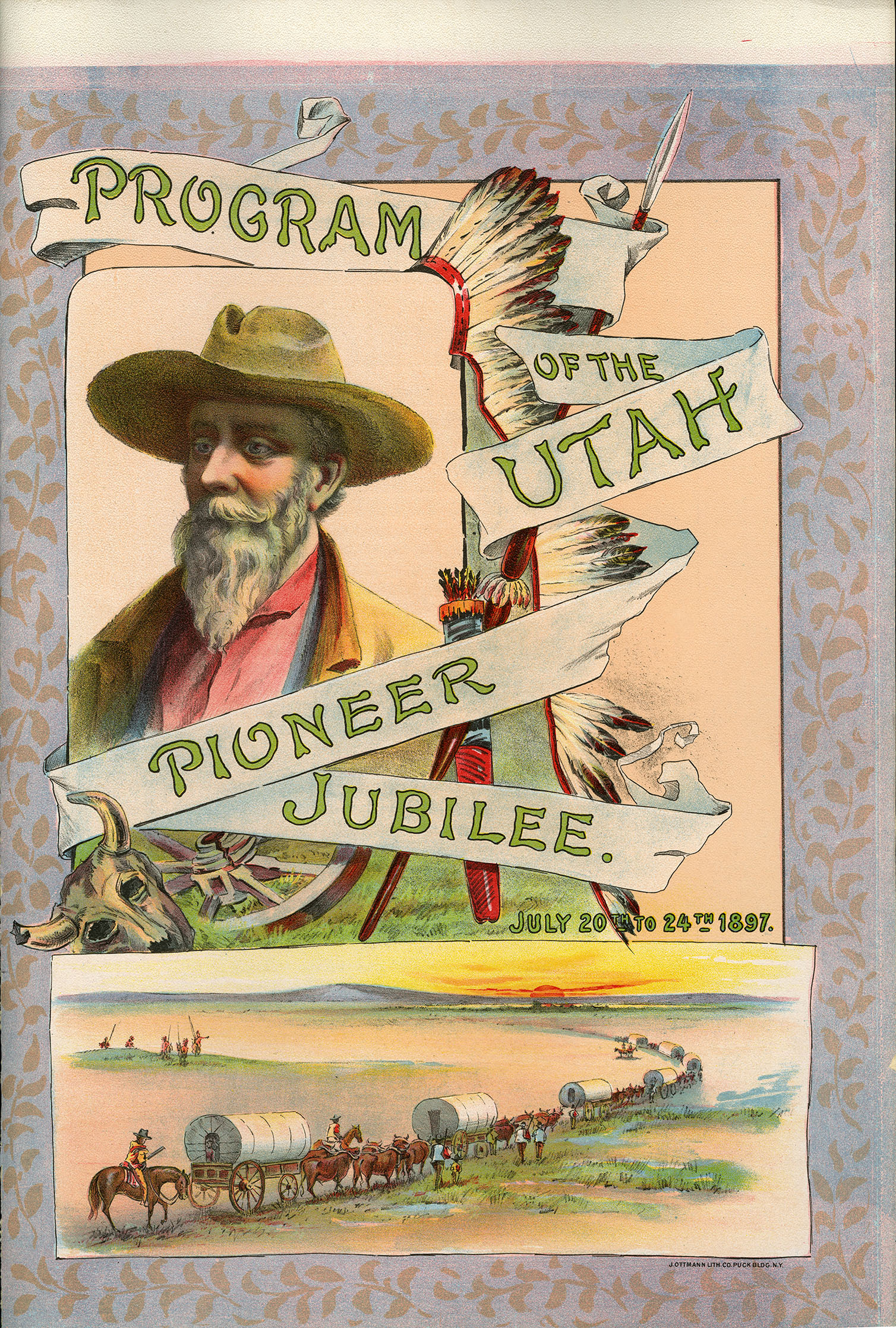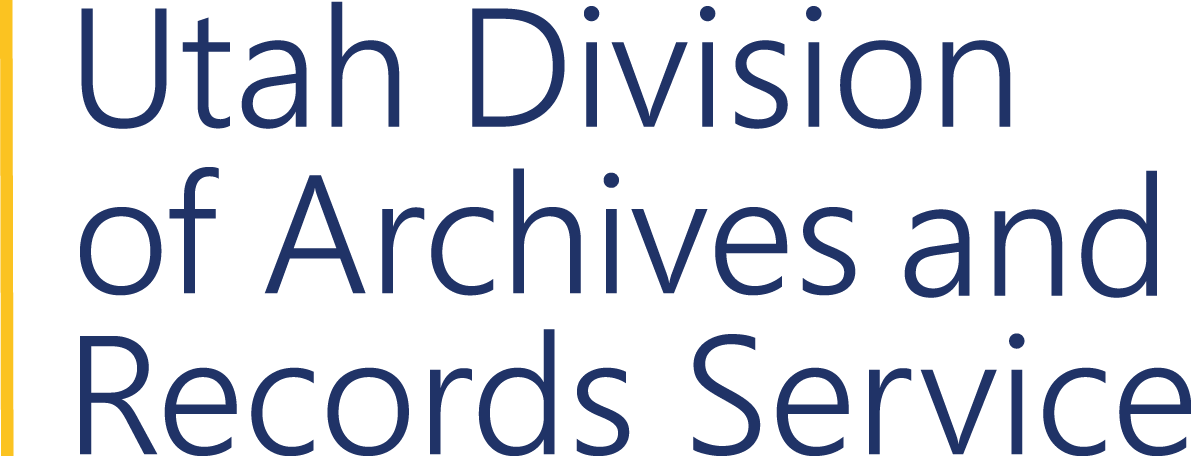 Citation: The Utah Semi-Centennial Commission, Utah State Historical Society Administration Files, Pioneer Jubilee Program, Utah State Archives and Records Service, Series 3192.
Citation: The Utah Semi-Centennial Commission, Utah State Historical Society Administration Files, Pioneer Jubilee Program, Utah State Archives and Records Service, Series 3192.
Links
- More images from the Pioneer Jubilee Program and the State Historical Society Administrative Files can be found in our Digital Archives.
- More information on the Utah's Road to Statehood and Statehood Day is available in one of the Archives' previous exhibits.
- More information on the Pioneer Jubilee can also be found on the Pioneer Jubilee website for the International Society Daughters of Utah Pioneers. Among other things, they provide images and information on the Commission, the Jubilee, it's events, and the Hall of Relics.
In January 1896, just days after Utah was granted statehood, Utah Governor Heber M. Wells suggested that the new Legislature assign a committee to plan an “Inter-Mountain Fair” to commemorate the 50th anniversary of the pioneers arrival in the state. The celebration was so important to these ruling men that Utah’s annual state fair was cancelled for 1896, to ensure that all energy and money were being focused on what became known as the “Semi-Centennial Celebration.”
Thus was born Utah’s Pioneer Jubilee Commission. For a year and a half, the commission worked to create an event worthy of their pioneer forefathers, to be remembered by all who came after. Events were held in Salt Lake and the state provided funds to each county to ensure that they were represented at the festivities, which would last for five full days.
Yet, the organizers of the event intended for this to have significance far beyond the identified borders of Utah. According to the Book of the Pioneers: “The colonies planted by the Utah Pioneers on the shores of the Great Salt Lake formed the nucleus of Western civilization, and made possible the settlement of the surrounding States and Territories. Colorado, Montana, Idaho, the Dakotas, Nevada (once a part of Utah), Wyoming, Arizona, and New Mexico indirectly owe their existence to Utah and her founders…even California is indebted to Mormon colonists…In light of these facts, what wonder that the Utah Pioneer Jubilee should be regarded by its projectors as a Jubilee for the whole Western region?” (Book of the Pioneers. Volume 2, page 13)
NextPage Last Updated July 20, 2017.
